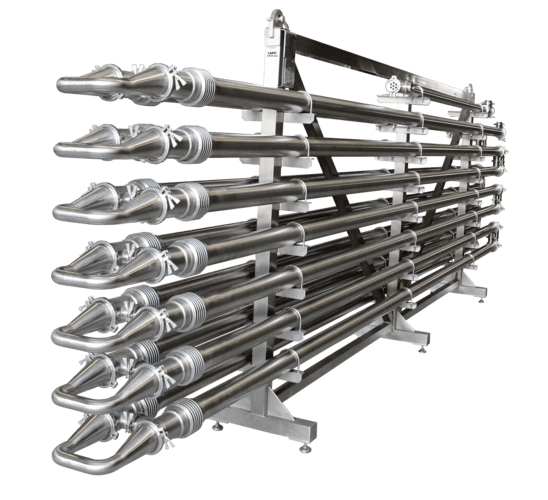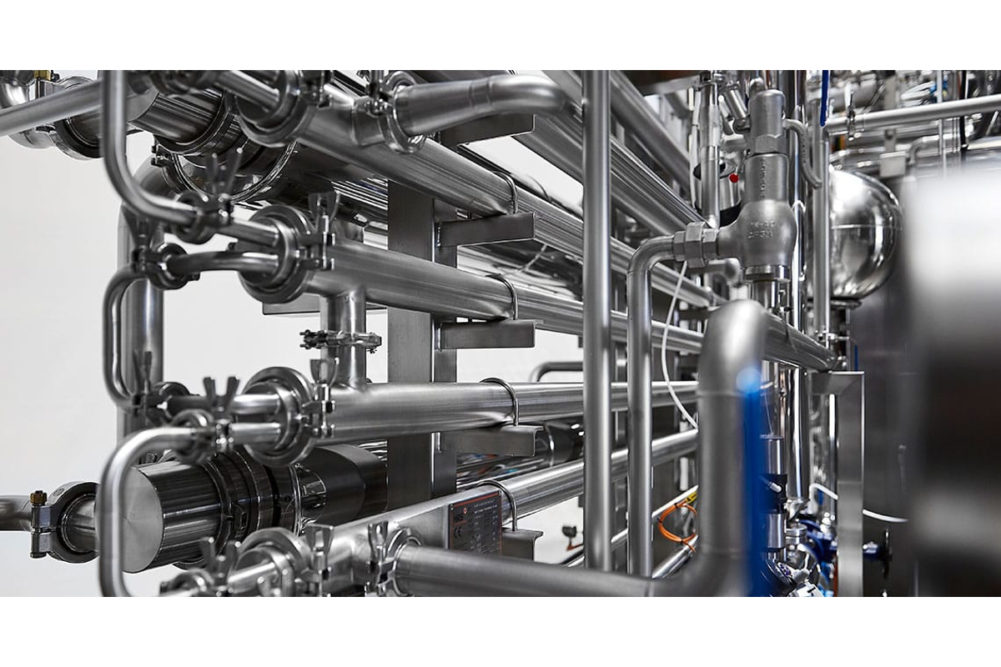Heat exchangers, a core piece dairy processing technology which plays a key role in pasteurization and the production of such products as milk, cream, ice cream, yogurt and cheese, are being closely assessed by many plant operators in order to find designs that enhance product quality while streamlining operating expenses.
Heat exchangers are a fundamental aspect of dairy processing and are heavily relied on by producers to ensure that their milk products satisfy industry standards and are safe for consumption.
With materials being handled ranging from simple fluids to complex viscous liquids, emulsions and materials containing large particles which must remain intact, there is no one-size-fits-all solution. There is a range of heat exchangers which are capable of dealing with high-fouling materials while maintaining product integrity.
Liquid milk is a stable fluid and presents very few challenges in handling and processing. Due to milk’s ability to be easily temperature regulated, most dairy companies use simple plate-type heat exchangers to perform tasks such as pasteurization, sterilization and other food processing operations.
Despite the simplicity of handling liquid milk, other dairy products, such as yogurt, butter, curds and cheese, all require different processing and storing temperatures. If handled incorrectly, they may have their key parameters damaged by routine procedures. Therefore, it is important for companies processing dairy products to select a heat exchanger that is best suited to the type of product they are producing.
Prioritizing maintenance
One way dairy processors can judge the effectiveness of their heat exchangers is by analyzing the time between cleanings. As there are no moving parts in plate and tubular heat exchangers, units should run the same day-to-day with proper cleaning and maintenance. Less fouling of a processor means longer run times and easier cleaning.
The manual should be the primary reference point for establishing safe operations and recommended cleaning in place (CIP). For older machines, regular maintenance is critical. Replacement parts should come from a certified source and repair work should be performed in accredited facilities.
The recommended flow rate and corresponding pressure drop should be included as part of the system design. The CIP flow rate should not be assumed, as this can vary greatly by the product being processed and the manufacturer of the equipment.

APV ParaTube Tubular Heat Exchanger
| Photo: SPX FlowHeat exchangers must be cleaned after every product run and sanitized before every production run. The proper CIP flow rate depends on the equipment’s requirements. For example, milk high-temperature–short-time (HTST) processing will have a lower CIP flow requirement than ice cream mix HTST. This is mainly due to the difference in viscosity.
Uneven flow across the plate in a plate heat exchanger can cause buildup and residue that can be difficult to clean and thus can harbor bacteria. Plates developed to have an even velocity will have a reduced amount of residue and be more easily cleaned with CIP.
There needs to be a similar inspection every time heat exchangers are sanitized. Something as simple as a broken blade pin can introduce a rough surface for food and bacteria to hide. Surface anomalies should be addressed and repaired as a preventative action.
A heat exchanger that meets the 3-A standards requirement should not have any crevices or pockets for product to hide. Any surface anomaly — such as pitting, rough welds, blistering and cracks — can become an area in which contamination could occur.
It is strongly recommended to open the heat exchanger after the first production run during commissioning to ensure the unit is cleaning, then progressively extending the time between openings. When opening the heat exchanger for inspection, it is wise to inspect the product connections and the entire heat transfer surface.
Heat exchangers are an important part of CIP processes, in which cleaning of system components takes place without having to dismantle or open the equipment for cleaning. The devices heat the cleaning water and solutions to a consistent temperature to aid in the removal of residue. Newer heat exchanger designs include units that are easier to clean and simpler to open for inspection.
Periodic visual inspections will ensure CIP systems are efficient. Operators also should inspect the cooling and heating media for such abnormalities as scaling, rusting or erosion.
Dairy processors can utilize control systems to continuously monitor valves and pumps. Any deviation from regular operating parameters means something is wrong, warranting an inspection. Having to run hotter and colder media temperatures compared to when the unit was new could be a sign of fouling and the need for cleaning.
Additionally, when equipment is fitted with a remote access and monitoring system, the manufacturer can access key information and metrics, and log on and discover any potential issues and quickly identify their resolution when necessary. Using the manufacturer’s technical expertise can save time and money by identifying problems and solutions quickly and without incurring costly site visits.

